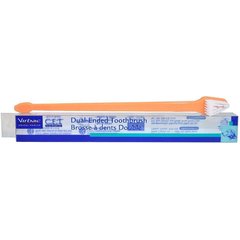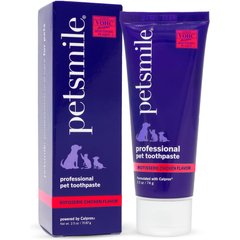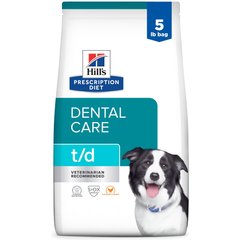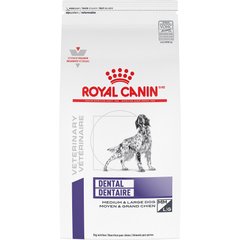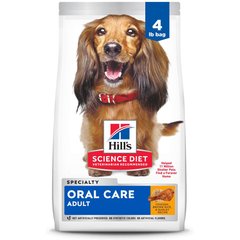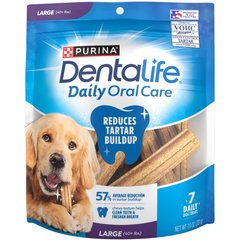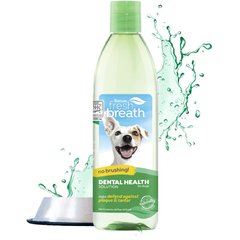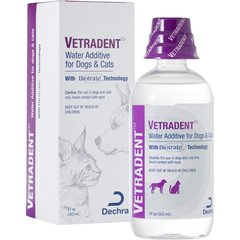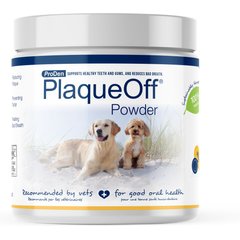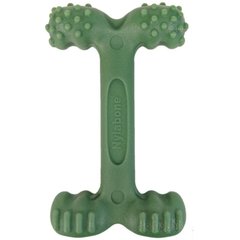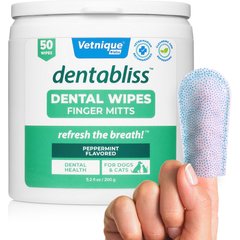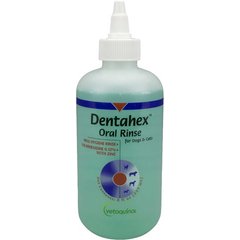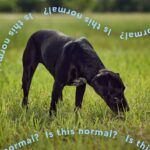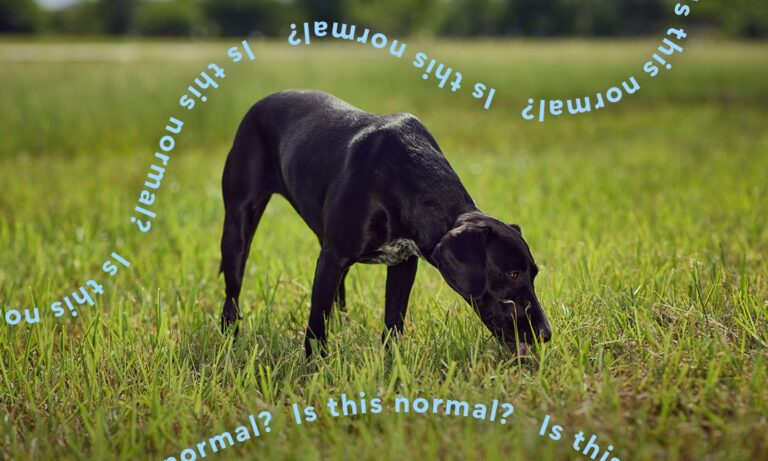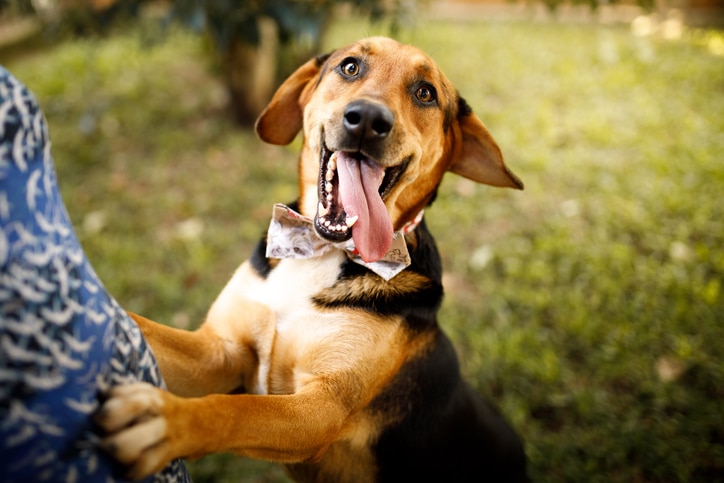What Is Dental Disease in Dogs? And How Do You Prevent It?
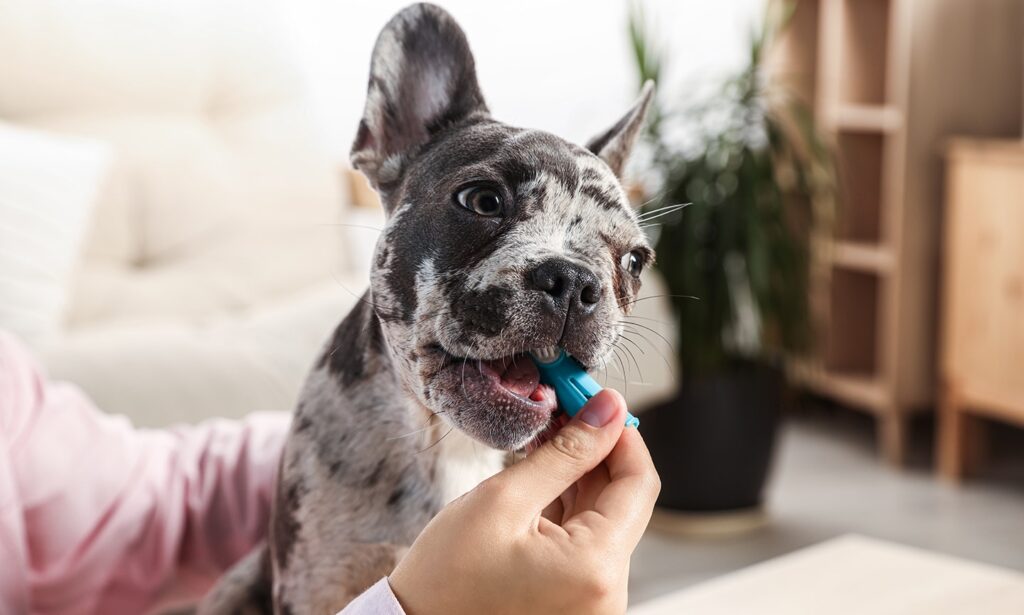
Photo by Liudmila Chernetska/iStock/Getty Images Plus
Affecting pups of all ages and breeds, dental disease in dogs is one of the most common health problems for our canine friends. And when left untreated, dental disease can cause seriously painful infections, tooth loss, stinky dog breath, and even health complications.
But don’t worry—reducing the risk of dental disease in your pup is possible with the right care.
What Are the Most Common Dental Diseases in Dogs?
Dogs can experience a variety of dental issues, some of the most common of which include:
- Plaque and tartar buildup
- Gingivitis
- Periodontal disease
- Unerupted teeth (teeth that are stuck in the jawbone and can’t break through the gums)
- Malocclusion (misaligned bite)
- Tooth fractures
- Halitosis (bad breath)
- Pulpitis (inflammation or infection of the tooth pulp)
- Tooth resorption (a condition where the tooth tissue gradually dissolves)
Of these, plaque and tartar buildup, gingivitis, and periodontal disease are by far the most common dental issues for dogs.
Plaque and Tartar Buildup in Dogs
Plaque and tartar buildup go hand in hand.
When a dog eats, the bacteria in their mouth feed on food particles. This breaks the food down into a clear, sticky, acidic film layer called plaque, which is made up of food particles, saliva, and bacteria. Plaque is the main driver of periodontal disease in dogs.
If not removed through brushing or chewing activities, plaque begins to harden into tartar (aka calculus) within 24 hours. Tartar is a yellow or brown mineralized substance that adheres firmly to teeth.
“The most common place for tartar to accumulate is on the outsides of the upper teeth, where the salivary ducts deposit saliva,” explains Rachel Cocchiaro, DVM, a veterinarian and partner at Bahama Road Veterinary Hospital, in Bahama, North Carolina.
Signs of Plaque and Tartar Buildup in Dogs
Plaque cannot be detected with the naked eye, but tartar is much easier to spot.
Here are some signs your dog might be dealing with plaque and tartar buildup:
- “Fuzzy” appearance to the teeth (due to plaque)
- Yellow or brown discoloration or buildup on teeth, especially near the gumline (due to tartar)
- Persistent bad breath
- Red, swollen, or irritated gums
How Plaque and Tartar in Dogs Is Treated
Daily toothbrushing is the most effective way to remove plaque and prevent it from hardening into tartar, explains Suzanna Hatunen, BVSc, DAVDC, a board-certified veterinary dentist at Veterinary Dental Services in Boxborough, Massachusetts.
Dental chews, water additives, and dental diets can also help reduce plaque buildup between brushings, Dr. Hatunen adds.
Once plaque hardens into tartar, it can no longer be removed at home and requires a professional dental cleaning performed by a veterinarian while the dog is under anesthesia and intubated, explains Dr. Cocchiaro. During this procedure, the vet will use specialized tools to scale and polish your dog’s teeth.
Gingivitis in Dogs
“Gingivitis, most simply, is inflammation of the gum tissue that is adjacent to the teeth,” Dr. Cocchiaro explains. “It occurs due to bacteria from plaque and tartar causing infection and inflammation of the gum tissue that it contacts.”
Gingivitis is the earliest stage of periodontal disease—and the only one that’s reversible.
Signs of Gingivitis in Dogs
Gingivitis occurs when plaque and mouth bacteria become trapped underneath the gumline.
Gingivitis in dogs can be subtle at first, but there are key warning signs to look for:
- Red, swollen, or inflamed gums
- Bleeding gums, especially during chewing or brushing
- Persistent bad breath
- Drooling
- Tartar buildup
- Discomfort when eating or chewing (or reluctance to eat)
How Gingivitis in Dogs Is Treated
The good news is pet parents can treat mild gingivitis at home with frequent toothbrushing and daily dental hygiene (dental chews, dental diet, water additives).
However, moderate to severe gingivitis requires professional dental cleaning, where your vet will clean underneath the gumline and scale and polish your pup’s teeth.
Periodontal Disease in Dogs
“Periodontal disease is the most common disease affecting the teeth in dogs, with a prevalence reported between 44% and 86.3%, depending on the study,” Dr. Hatunen says.
This condition, which progresses beyond gingivitis, affects the tissues that support and surround the teeth. This includes the gums, jawbone, periodontal ligament (which connects the tooth root to the jawbone), and cementum (the hard outer layer covering the tooth root).
Left untreated, it progresses to bone loss around the teeth and, eventually, tooth loss.
Signs of Periodontal Disease in Dogs
Periodontal disease can develop gradually, but as the condition progresses, there are usually clear signs, including:
- Red, swollen, or bleeding gums
- Persistent bad breath
- Yellow or brown tartar buildup along the gumline
- Receding gums or exposed tooth roots
- Loose, wobbly, or missing teeth
- Difficulty eating, chewing, or picking up food
- Sensitivity around the mouth
- Drooling excessively or pawing at the mouth
- Swelling or discomfort of the face or around the mouth or jaw
How Periodontal Disease in Dogs Is Treated
Treating periodontal disease depends on the severity of the condition.
In earlier stages, ultrasonic scaling and polishing can reduce inflammation, and antibiotic gel can be applied to small pockets around the tooth to treat infection, explains Dr. Cocchiaro.
However, if the disease progresses to the point where the tooth becomes loose or an abscess forms, Dr. Cocchiaro says tooth extraction is usually recommended.
Are Certain Dogs More Susceptible to Dental Disease?
While all dogs form plaque and are at risk for dental disease, it’s well established that smaller breeds are more susceptible, Dr. Hatunen says. It also becomes more prevalent with age, she adds.
Smaller breeds might be more prone to dental disease because their smaller mouth often leads to crowded teeth that trap food and bacteria more easily. Their longer lifespan also provides more time for dental problems to develop.
Brachycephalic (aka flat-faced) breeds like Pugs, French Bulldogs, and Boxers also tend to be more susceptible, adds Dr. Cocchiaro.
How To Prevent Dental Disease in Dogs
The most effective way to prevent or slow the progression of periodontal disease in dogs is by managing plaque buildup, says Dr. Hatunen.
Here are some tips to help you achieve this.
Pro Tip: Choose dental products with the Veterinary Oral Health Council (VOHC) seal, which indicates they’re scientifically proven to remove plaque and prevent tartar. However, keep in mind that products such as water additives and dental wipes are not a replacement for regular toothbrushing, says Dr. Hatunen.
Brush Your Dog's Teeth Regularly
Use a pet-specific toothbrush, such as the Virbac C.E.T. toothbrush, and pet-friendly toothpaste, such as Petsmile Professional Pet Toothpaste.
Never use human toothpaste, as it typically contains ingredients that can be toxic to pets.
Recommended Products
Feed a Dental Diet
Specially formulated dental dog food can help reduce plaque and prevent tartar buildup. These foods use kibble with a unique texture designed to scrub the teeth as your dog chews.
Popular options include Hill’s Prescription Diet Dental Care and Royal Canin Veterinary Diet Adult Dental, both of which have the VOHC seal and require a prescription from your vet.
Another great option is the over-the-counter dental diet Hill’s Science Diet Oral Care, which is also VOHC approved to reduce plaque and tartar buildup. Speak with your vet before switching your dog’s food.
Recommended Products
Provide Dental Chews
Dental chews, such as Greenies, Purina Dental Chewz, and Purina DentaLife Treats (which all have the VOHC seal!), are a convenient and tasty way to reduce plaque and tartar. These chews work by scraping away plaque and tartar as your dog gnaws on them. Choose the right size for your dog for safer chewing.
Recommended Products
Use Water Additives or Food Powders
Water additives, which are simply added to your dog’s water bowl, are a convenient option to support your dog’s dental health.
These additives contain ingredients that break down plaque, fight bacteria, and freshen your dog’s breath. A couple of VOHC-approved products include TropiClean Fresh Breath and Vetradent.
Powders, such as ProDen PlaqueOff, are another option and can be added to your dog’s wet or dry food.
Recommended Products
Offer Dental Toys
Dental toys, such as BetterBone and Nylabone Power Chew toy, are made of durable materials with ridges or grooves that help scrape plaque off the teeth as your dog chews.
Pick toys that are the right size and texture for your dog to prevent choking or tooth damage.
Recommended Products
Keep Wipes or Rinses on Hand
Dental wipes and rinses are great for those times when brushing isn’t an option or in between brushing sessions.
Wipes, such as Vetnique Labs Dentabliss finger mitts, and rinses, such as Vetoquinol Dentahex Oral Rinse, can be used to quickly remove plaque and prevent tartar buildup.
Recommended Products
Keep an Eye on Your Dog's Mouth
Regularly check your dog’s teeth and gums for signs of tartar buildup, redness, swelling, or bad breath. Early detection and action are key to preventing severe dental disease.
Schedule Regular Vet Checkups
Routine veterinary visits usually include oral exams that can catch dental problems early. Dr. Hatunen also recommends annual professional cleanings with a veterinarian to remove tartar and maintain oral health.
FAQs About Dental Disease in Dogs
How long can a dog live with dental disease?
Dogs can live with periodontal disease for a long time, but it often reduces their quality of life because of severe gum infection and mouth pain. Advanced or untreated dental disease can lead to complications such as infections and damage to internal organs, which might shorten a dog’s lifespan.
What are the symptoms of dental disease in dogs?
Symptoms of dental disease in dogs can include:
- Bad breath
- Red or swollen gums
- Yellow or brown tartar buildup
- Loose or missing teeth
- Difficulty chewing
- Drooling
- Changes in eating habits and pawing at the mouth
If you spot any of these signs, take your pup to the vet ASAP.
Can dental disease cause kidney failure in dogs?
Yes, dental disease can contribute to kidney failure in dogs. When bacteria from advanced dental infections enter the bloodstream, they can travel to vital organs such as the kidneys, liver, and heart, causing damage over time.
This content was medically reviewed by Molly Price, DVM, Chewy veterinarian.
